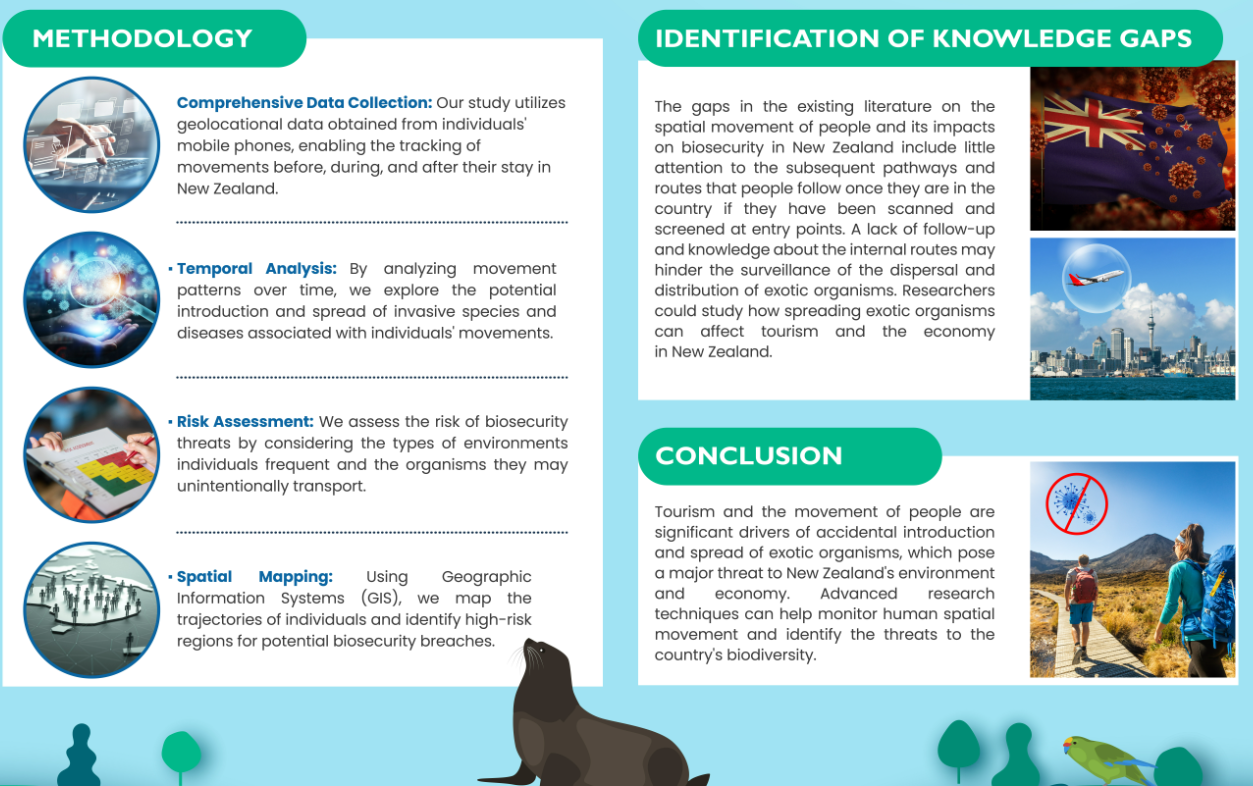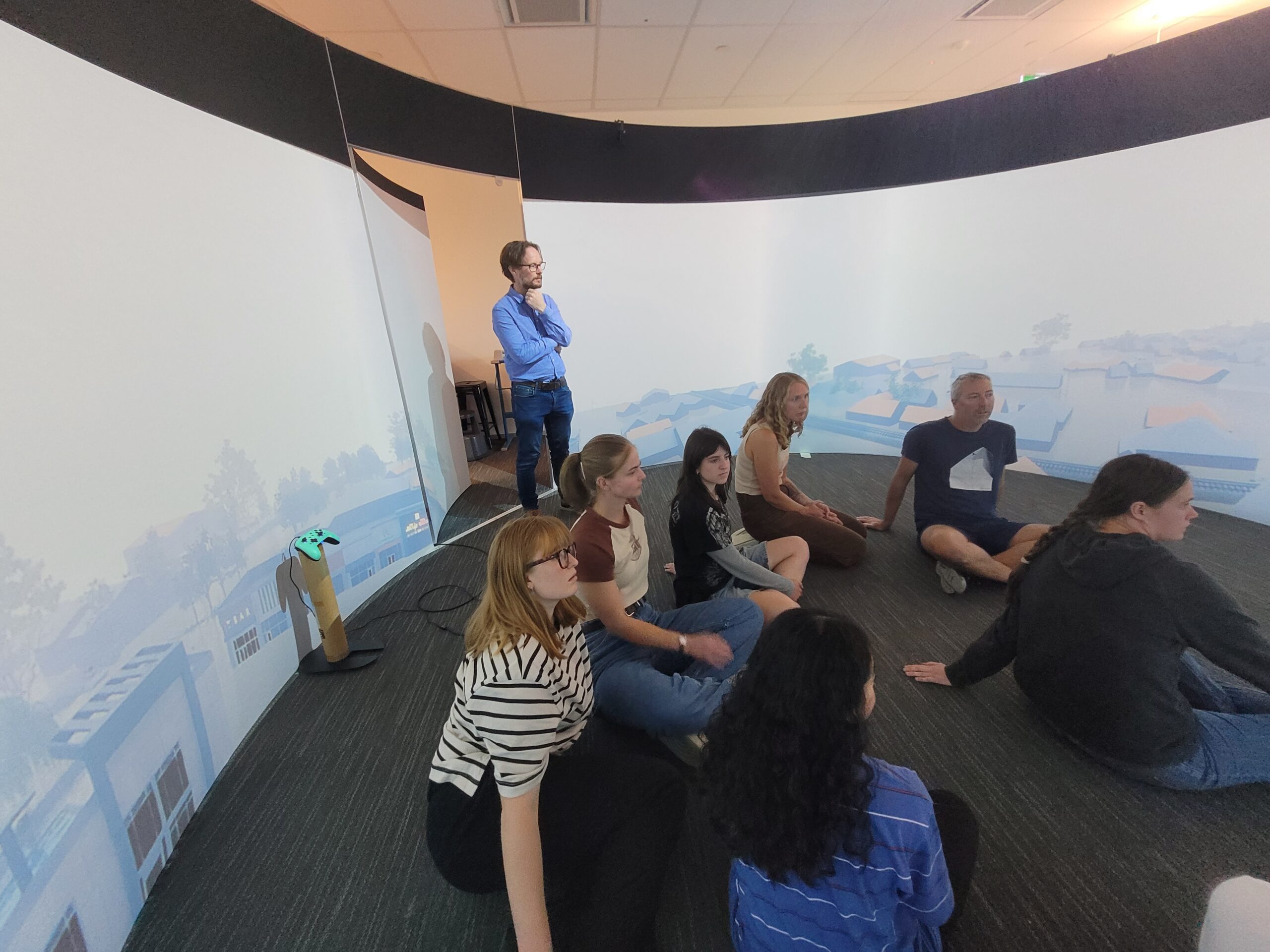Date
September 5-6, 2023
Submitted to
The Fourth Spatial Data Science Symposium
Authors
Ishwarya Anand, Vanessa Bastos, Steve Pawson, Andrew Robinson, Heyang (Thomas) Li
Abstract
New Zealand is a treasure of biodiversity in the heart of Pacific. Tourism is one of the main causes of the accidental introduction and spread of harmful foreign plants and animals within New Zealand. The international tourists may unintentionally bring pests, seeds, or any other unwanted materials which might pose a serious risk to New Zealand’s delicate ecosystem. These alien species could affect the economy, surroundings, and the health of the human beings either directly or indirectly. We want to uncover hidden patterns of movement and their biosecurity consequences through thorough spatial analysis. This study aims to quantify the extent to which tourism contributes to the introduction and spread of invasive organisms by tracking the location-specific movements of visitors to New Zealand 14 days before and after their arrival. Our findings will not only highlight possible risks, but they also establish the framework for strengthening border restrictions and developing effective monitoring procedures. This research will provide insight on the way forwards for managing the challenges of tourism while still conserving our biodiversity. Understanding the movement of travellers will allow us to predict and respond to risks, ensuring a safe future for our unique heritage. We desire to welcome tourists from all around the world while simultaneously protecting New Zealand’s natural beauty.
Click to view or download the JPG of the poster.



